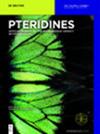血清同型半胱氨酸作为2型糖尿病肾病早期诊断的生物标志物的临床意义
IF 0.9
4区 医学
Q4 BIOCHEMISTRY & MOLECULAR BIOLOGY
引用次数: 4
摘要
摘要目的探讨血清同型半胱氨酸(Hcy)作为2型糖尿病(T2DM)患者糖尿病肾病(DN)早期诊断的生物标志物的临床意义。方法前瞻性招募2016年1月~ 2020年5月我院合并DN的T2DM患者55例,非DN的T2DM患者51例。采用电化学发光法检测DN组和T2DM组血清Hcy水平,并进行比较。通过计算诊断敏感性、特异性和ROC曲线下面积(AUC)来评价血清Hcy作为早期诊断DN的生物标志物的诊断效果。结果DN、T2DM患者血清Hcy水平分别为15.49±5.40、9.23±3.15 μmol/L,差异有统计学意义(t = 7.21, P < 0.001)。DN组高滤过、间歇性蛋白尿、微量白蛋白尿、大量白蛋白尿和尿毒症患者血清Hcy水平分别为10.99±2.57、13.90±2.86、15.38±4.77、18.98±4.36和23.31±5.22 μmol/L,提示DN患者血清Hcy水平高于T2DM患者,且与患者肾损害相关。以血清Hcy水平为参考,诊断敏感性为84.31(71.41 ~ 92.98)%,特异性为74.55 (61.00 ~ 85.33)%,AUC为0.85 (0.78 ~ 0.92)%,DN与T2DM的临界值为12.08。血清Hcy在不同DN分期间也有较好的鉴别诊断效果,具有较高的敏感性、特异性和AUC。结论与T2MD相比,DN患者血清Hcy明显升高,且与肾损害程度相关,可作为DN早期诊断的潜在血清学指标。本文章由计算机程序翻译,如有差异,请以英文原文为准。
Clinical significance of serum homocysteine as a biomarker for early diagnosis of diabetic nephropathy in type 2 diabetes mellitus patients
Abstract Objective The aim of this study was to investigate the clinical significance of serum homocysteine (Hcy) as a biomarker for early diagnosis of diabetic nephropathy (DN) in type 2 diabetes mellitus (T2DM) patients. Methods Fifty-five T2DM patients with DN and 51 T2DM patients without DN were prospectively recruited from January 2016 to May 2020 in our hospital. The serum Hcy was tested by electrochemiluminescence assay in DN and T2DM groups and compared. The diagnostic efficacy of serum Hcy as a biomarker for early diagnosis of DN was evaluated by calculating the diagnostic sensitivity, specificity and area under the ROC curve (AUC). Results The serum levels of Hcy were 15.49 ± 5.40 and 9.23 ± 3.15 μmol/L for DN and T2DM patients, respectively, with statistical difference (t = 7.21, P < 0.001). In the DN group, the serum Hcy levels for patients with hyperfiltration, intermittent proteinuria, microalbuminuria, macroalbuminuria and uremic were 10.99 ± 2.57, 13.90 ± 2.86, 15.38 ± 4.77, 18.98 ± 4.36 and 23.31 ± 5.22 μmol/L, respectively, which indicated that serum Hcy levels in DN were higher than those of T2DM patients and correlated with patient’s renal damage. Using the serum Hcy level as the reference, the diagnostic sensitivity, specificity and AUC were 84.31 (71.41–92.98)%, 74.55 (61.00–85.33)% and 0.85 (0.78–0.92)%, respectively, with the cutoff value of 12.08 between DN and T2DM. The serum Hcy also had relatively good differential diagnostic efficacy between different DN stages with high sensitivity, specificity and AUC. Conclusion Serum Hcy was obviously elevated in DN compared to T2MD and correlated with the renal damage severity, which can be applied as a potential serological marker for early diagnosis of DN.
求助全文
通过发布文献求助,成功后即可免费获取论文全文。
去求助
来源期刊

Pteridines
生物-生化与分子生物学
CiteScore
1.20
自引率
25.00%
发文量
6
审稿时长
>12 weeks
期刊介绍:
Pteridines is an open acess international quarterly journal dealing with all aspects of pteridine research. Pteridines are heterocyclic fused ring compounds involved in a wide range of biological functions from the color on butterfly wings to cofactors in enzyme catalysis to essential vitamins. Of the pteridines, 5,6,7,8-tetrahydrobiopterin is the necessary cofactor of several aromatic amino acid monoxygenases, the nitric oxide synthases and glyceryl ether monoxygenase (GEMO). Neopterin plays an essential role in the immune system and is an important biomarker in laboratory medicine for diseases such as HIV, cardiovascular disease, malignant tumors, among others.
Topics:
-Neopterin, dihydroneopterin, monapterin-
Biopterin, tetrahydrobiopterin-
Folates, antifolates, riboflavin-
Phenylalanine, tyrosine, phenylketonuria, serotonin, adrenalin, noradrenalin, L-DOPA, dopamine, related biogenic amines-
Phenylalanine hydroxylase, tyrosine hydroxylase, tryptophan hydroxylase, nitric oxide synthases (iNOS), alkylglycerol monooxygenase (AGMO), dihydropterin reductase, sepiapterin reductase-
Homocysteine, mediators of inflammation, redox systems, iron.
 求助内容:
求助内容: 应助结果提醒方式:
应助结果提醒方式:


